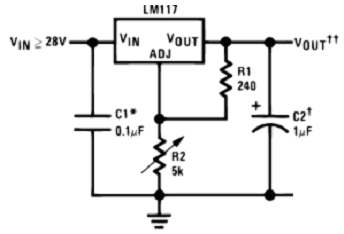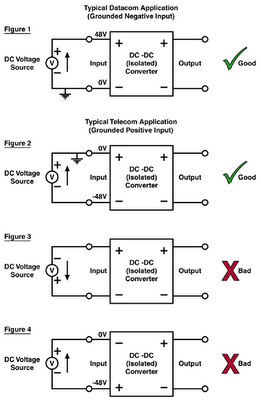Vous pouvez aussi nous contacter en nous appelant au:
Bibliothèque Technique
Convertisseurs DC-DC FAQ
Sélectionnez votre question dans la liste ci-dessous
-
Quelles sont les grandes differences entre les convertisseurs isolés et non-isolés?
There are two frequently used terms for types of DC-DC converters; non-isolated and isolated. This “isolation” refers to the existence of an electrical barrier between the input and output of the DC-DC converter.
The simplest example of a non isolated “converter” is the popular LM317 three terminal linear regulator. One terminal for unregulated input, one for the regulated output and one for the common.
Note there is no isolation between the input and output.
Today, non-isolated switching regulators are very common, aka Point of Load (POL) converters.
Although low cost and simple, these converters suffer from one disadvantage in that there is an electrical connection between the input and output. Many safety agency bodies and/or customers require a separation from the applied input voltage and the output voltage which is often user accessible.
An isolated DC-DC converter will have a high frequency transformer providing that barrier. This barrier can withstand anything from a few hundred volts to several thousand volts, as is required for medical application.
A second advantage of an isolated converter is that the output can be configured to be either positive or negative.
Where many users get confused concerns how to connect the input up, particularly with the differences between a datacom system (input negative connected to chassis) and a telecom system (input positive connected to chassis).
Below are four scenarios, be aware - figures 3 & 4 will result in failed converters! Most DC-DC converters cannot withstand reversed input connections.
Source National Semiconductor

-
Est-ce que je peux alimenter une alimentation AC-DC à partir d’une source DC?
...The answer is yes, sometimes.
Many standard AC-DC switched mode power supplies (most of TDK-Lambda's products) specify a high voltage DC input range in addition to the more common AC input range of 90-264VAC. We receive many questions about how and where to connect the DC input to an AC-DC supply that is specified to operate off of DC as well as an AC inputs.
N'hésitez pas à nous contacter si vous ne trouvez pas ce que vous recherchez

